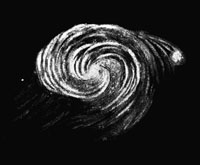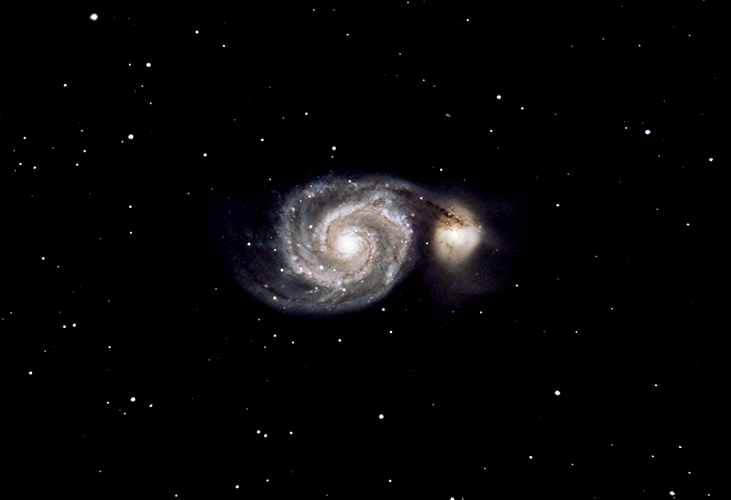Colliding Galaxies (M51)
Click on photo for larger image.
The larger galaxy is known as M51, the Whirlpool galaxy. It's about 23 million light years away and is 65 thousand light years in diameter. The spiral structure was discovered in 1845 by William Parson, the 3rd Earl of Rosse, using a 72" telescope. The huge scope was known as the Leviathan of Parsonstown. He thought (reasonably) that he was seeing another solar system forming out of swirling interstellar dust. Lord Rosse's sketch is below. It wasn't until 1925 that Hubble discovered there are other galaxies beyond the Milky Way. It's now known there is a large black hole at the Whirlpool's center.

The smaller galaxy, NGC 5195, has been circling around M51 in a gravitational collision for the last half billion years or so. It's now slightly behind M51. The star bridge connecting them and the dust clouds now covering part of NGC 5195 are both a result of the ongoing gravitational interaction, which will eventually cause the two galaxies to merge.
When galaxies collide it's not particularly violent. The chance of any stars colliding is minuscule because there's so much space between them. A burst of new star formation from the perturbation of galactic dust clouds is triggered. The collision will also cause millions of stars to get ejected out into intergalactic space and become so-called rogue stars.
Craig Lent, 8" SCT @f/7, 50 min exposure, QHY10, Potawatomi Wildlife Park, Marshall County, Indiana.
